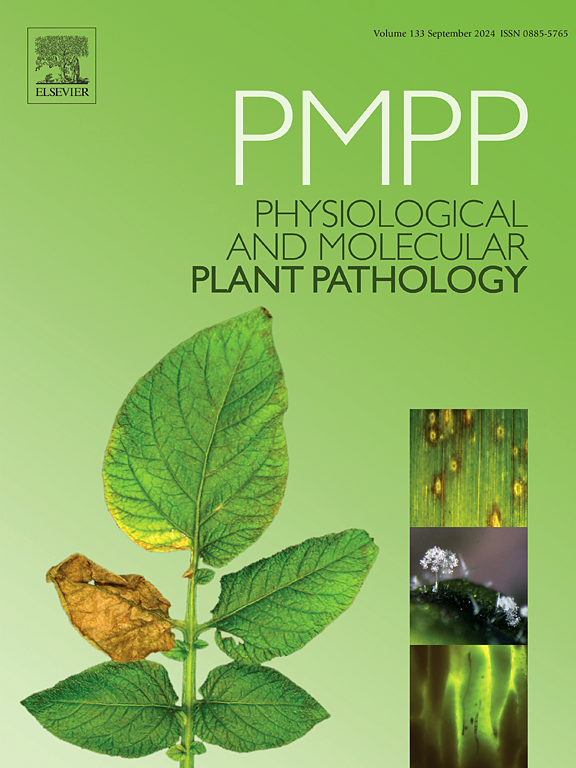Elucidating the synergistic activity of biocontrol agents in combating Xanthomonas citri pv. malvacearum and promoting of physio-chemical responses in cotton
IF 2.8
3区 农林科学
Q2 PLANT SCIENCES
引用次数: 0
Abstract
Cotton (Gossypium hirsutum L.) is an important fiber crop in agriculture-based economy countries, identifying the yield and quality-limiting factors are the key concerns for cotton growers. In this regard, many abiotic and biotic factors are reported to have a negative impact on cotton quality and eventually impact the textile industry. Bacterial blight of cotton (BBC) caused by Xanthomonas citri pv. malvacearum (X. citri pv. malvacearum) poses a major threat to cotton crops worldwide and epidemics largely depend on suitable environmental conditions. In the present study biocontrol agents Bacillus subtilis, Pseudomonas fluorescens and Trichoderma harzianum were tested individually and in combinations for sustainable control of the BBC of cotton. Among the treatments B. subtilis + P. fluorescens exhibited promising results in controlling BBC incidence (40 %) under field conditions, stimulated plant growth and improved fiber fitness, fiber quality and staple length. In addition to antagonism, these bio-agents triggered defensive enzymes and showed higher activity of peroxidases, phenylalanine ammonia-lyase, polyphenol oxidase, β-1,3 glucanase. However, physiological traits such as transpiration rate, water use efficiency, stomatal conductance, chlorophyll and cell membrane stability were found to be enhanced in B. subtilis + P. fluorescens treated plants. The overall results revealed that combined application of B. subtilis + P. fluorescens could significantly augment plant productivity, reduce BBC disease incidence and trigger physio-chemical attributes, indirectly sustaining plant health and improving fiber traits.

求助全文
约1分钟内获得全文
求助全文
来源期刊
CiteScore
4.30
自引率
7.40%
发文量
130
审稿时长
38 days
期刊介绍:
Physiological and Molecular Plant Pathology provides an International forum for original research papers, reviews, and commentaries on all aspects of the molecular biology, biochemistry, physiology, histology and cytology, genetics and evolution of plant-microbe interactions.
Papers on all kinds of infective pathogen, including viruses, prokaryotes, fungi, and nematodes, as well as mutualistic organisms such as Rhizobium and mycorrhyzal fungi, are acceptable as long as they have a bearing on the interaction between pathogen and plant.

 求助内容:
求助内容: 应助结果提醒方式:
应助结果提醒方式:


